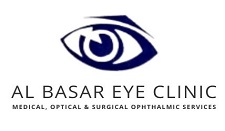
Imagine a world where the colors fade, the clarity dims, and the beauty of everyday life gradually slips away. This is the reality for millions of adults battling cataracts, a silent thief of sight. But fear not, for in the realm of modern medicine, a ray of hope shines brightly. Join us on a captivating journey as we delve into the causes and treatment options for cataracts, unlocking the secrets to reclaiming the vibrant tapestry of vision.
Cataracts are characterized by the clouding of the eye’s natural lens, which is responsible for focusing light onto the retina. Normally, a clear lens allows light through, focussing images onto the back of the eye (the Retina). If the lens becomes opaque, it obstructs the passage of light, leading to blurry vision and reduced visual acuity. Cataracts typically develop gradually over time and can affect one or both eyes.

Causes of Cataracts:
Several factors contribute to the development of cataracts, including:
- Aging: The most common cause of cataracts is age-related changes in the lens. As we grow older, the proteins in the lens may break down, leading to cloudiness.
- Ultraviolet (UV) Radiation: Prolonged exposure to UV radiation from the sun without adequate eye protection can increase the risk of developing cataracts.
- Diabetes: Individuals with diabetes are more prone to developing cataracts due to changes in their blood sugar levels affecting the lens.
- Trauma or Injury: Physical trauma or injury to the eye can cause cataracts to develop at a younger age.
- Inflammation: Improperly-managed long-term inflammation (usually a red eye) can lead to cataract formation.
- Toxic: Certain drugs can cause cataract formation. Steroids like Prednisolone, either from abuse or chronic therapy for other conditions, can cause cataract formation.
- Genetic Factors: In some cases, cataracts may be inherited, leading to their occurrence in infants or children.
Symptoms of Cataracts
The signs and symptoms of cataracts may vary, but common indicators include:
- Blurred, hazy, or cloudy vision
- Increased sensitivity to light and glare
- Difficulty seeing at night or with bright lights.
- Colors appearing faded or yellowed
Diagnosis
If you experience symptoms associated with cataracts, it is essential to schedule an eye examination with an Ophthalmologist. The diagnosis is made following comprehensive tests, including those that determine if the cataract is operable or not.
Treatment Options
While cataracts cannot be reversed without surgery, there are measures you can take to manage the condition and improve vision. Treatment options include:

- Eyeglasses: In the early stages of cataracts, updating your eyeglass prescription may improve visual clarity.
- Improved Lighting: Utilizing brighter lighting and reducing glare can alleviate vision difficulties associated with cataracts. However, there are types of cataracts in which vision reduces under bright illumination.
- Magnifying Devices: These aids can assist with reading and other close-up tasks.
- Cataract Surgery: If cataracts significantly impact daily activities and quality of life, surgical intervention may be necessary. During the procedure, the clouded lens is removed and replaced with an artificial intraocular lens (IOL). Cataract surgery is a safe and effective option, with high success rates and a relatively quick recovery period.
Prevention
Although it may not be possible to prevent cataracts entirely, certain measures can reduce the risk or delay their onset:
- Protect Your Eyes from UV Radiation: Wear sunglasses with UV protection and wide-brimmed hats when outdoors.
- Quit Smoking: Smoking has been linked to an increased risk of cataracts. Quitting or avoiding smoking can help protect your eyes.
- Manage Chronic Health Conditions: Properly manage conditions like diabetes to minimize the risk of developing cataracts. Cataracts develop earlier in uncontrolled diabetes, sometimes occurring very quickly as to cause a sudden deterioration in vision (sugar cataracts)
Conclusion
As we draw the curtains on our exploration of cataracts, a powerful message emerges: sight is an irreplaceable treasure, worthy of every effort to preserve and restore. While cataracts may cast a shadow over the eyes, the light of medical advancements illuminates the path to clarity. Armed with knowledge and a multitude of treatment options, we stand poised to conquer this formidable foe. Let us embrace the vision of a future where every gaze holds a story, and every moment is painted with the hues of life’s truest colors. Together, we can dispel the cloud of cataracts and inspire a world where the beauty of sight knows no bounds.
